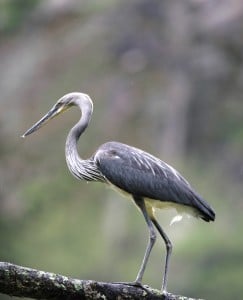
The Gentle Giants Face Rough Opposition
One among the 50 rarest birds in the world with a population of less than 200, the white bellied heron, also referred to as the gentle giant because of its mild nature, has at present found its passage into the list of ‘critically endangered’ species.
The heron still sighted in parts of Bhutan, Bangladesh, Myanmar and India occasionally, is today extinct in Nepal. And, its decline is further projected in the future.
According to a Royal Society for Protection of Nature (RSPN) study carried out by noted Bhutanese environmentalist Rebecca Pradhan, the major cause of threat to the bird in Bhutan is due to the loss of its feeding habitat and disturbances in its flight path because of telephone and electricity wires.
A study on the threatened species began in Bhutan as early as 2003 by the RSPN, the World Wildlife Fund, the Felburn Foundation and the International Crane Foundation. And recognizing the importance of the Punakha-Wangdue river basin as a primary feeding ground for the bird, the Bhutanese government has declared the area a protected habitat.
Efforts by the RSPN and the department of forest are underway to protect and restore the feeding habitats of the bird while monitoring and curbing illegal fishing in those areas. Advocacy on the importance of the bird’s existence and the need to protect it by communities are also being carried out. Further, the RSPN is planning to radio-band the herons to keep track of their migratory patterns and their distribution in Bhutan.
The white bellied heron can be identified by its long legs, grayish slender body with a long head and neck and a huge thick bill. Although big in size, the heron is difficult to spot because its color camouflages it to its surroundings.

